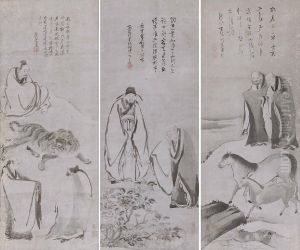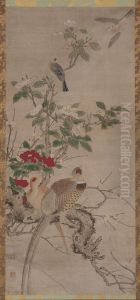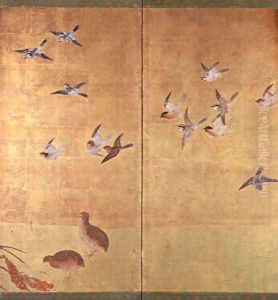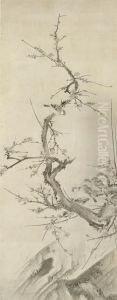Kano Sanraku Paintings
Kano Sanraku was a prominent Japanese painter who lived during the Azuchi-Momoyama and early Edo periods. Born in 1559, he was initially named Sakyōnosuke before adopting the art name Sanraku. Sanraku was an adopted son of Kano Eitoku, one of the most eminent painters of the Kano school, which was the leading school of Japanese painting for several centuries and greatly influenced by the teachings of Zen Buddhism and Chinese painting methods.
Sanraku's works often reflected the grandiose style of his adoptive father, characterized by bold compositions, vivid colors, and powerful brushwork. The Kano school's style was particularly favored by the ruling class for decorating castles, temples, and villas, which is why much of Sanraku's work was large-scale screen paintings and wall murals.
After the death of Kano Eitoku, Sanraku continued to lead the Kano school and contributed significantly to its legacy. He trained several artists, including his sons Kano Sansetsu and Kano Sanraku II, ensuring the continuity and evolution of the school's style. Sanraku's works include a variety of subjects, such as landscapes, bird-and-flower paintings, and scenes from Japanese literature and history.
Sanraku's contribution to the Kano school and Japanese painting as a whole was substantial. His ability to blend the grandiose Momoyama style with the more sedate aesthetics of the incoming Edo period allowed for a transition in the visual arts that mirrored the societal changes of his time. He passed away in 1635, leaving behind a rich legacy that would influence Japanese art for generations to come.




